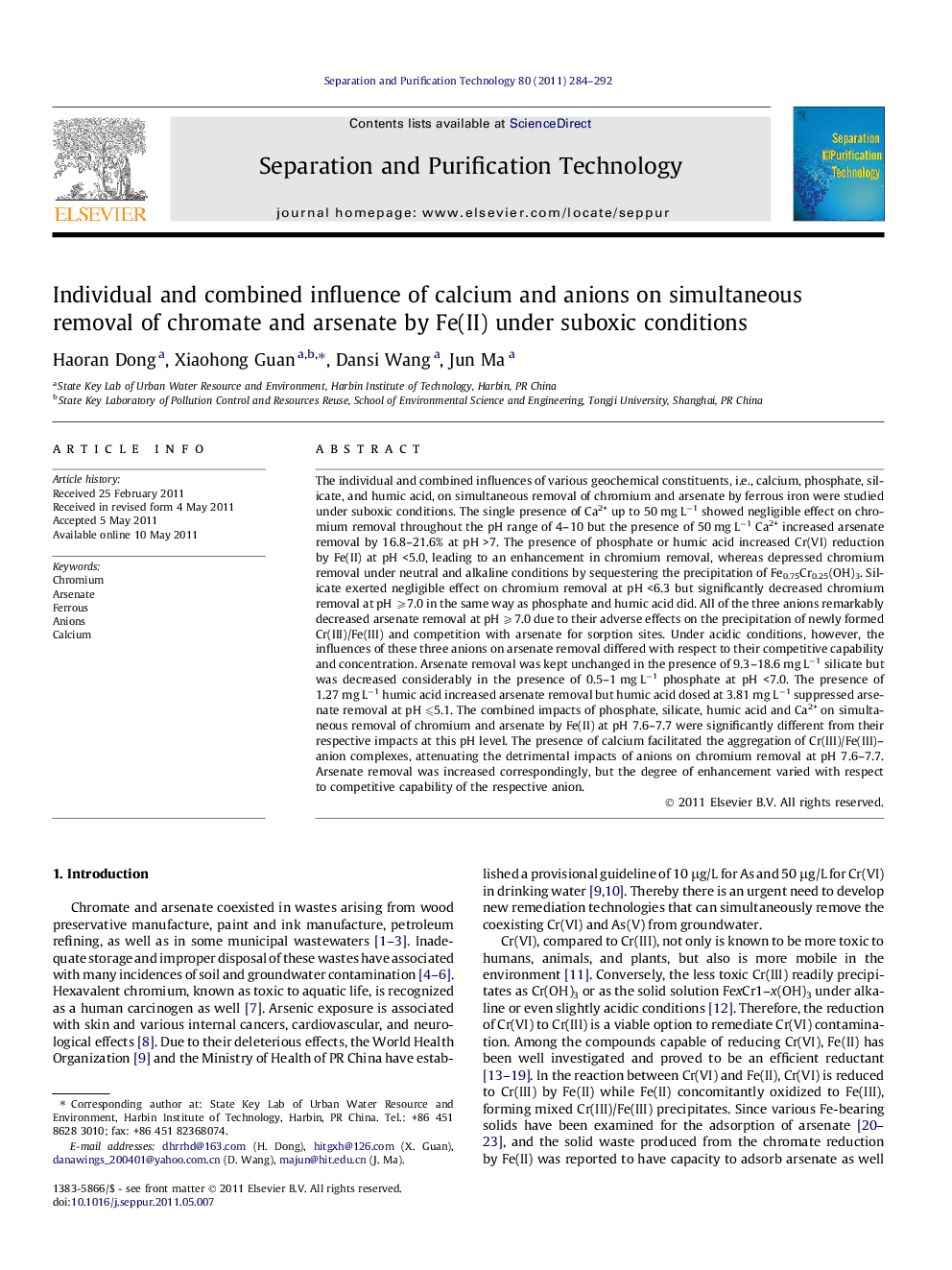| Article ID | Journal | Published Year | Pages | File Type |
|---|---|---|---|---|
| 642602 | Separation and Purification Technology | 2011 | 9 Pages |
The individual and combined influences of various geochemical constituents, i.e., calcium, phosphate, silicate, and humic acid, on simultaneous removal of chromium and arsenate by ferrous iron were studied under suboxic conditions. The single presence of Ca2+ up to 50 mg L−1 showed negligible effect on chromium removal throughout the pH range of 4–10 but the presence of 50 mg L−1 Ca2+ increased arsenate removal by 16.8–21.6% at pH >7. The presence of phosphate or humic acid increased Cr(VI) reduction by Fe(II) at pH <5.0, leading to an enhancement in chromium removal, whereas depressed chromium removal under neutral and alkaline conditions by sequestering the precipitation of Fe0.75Cr0.25(OH)3. Silicate exerted negligible effect on chromium removal at pH <6.3 but significantly decreased chromium removal at pH ⩾7.0 in the same way as phosphate and humic acid did. All of the three anions remarkably decreased arsenate removal at pH ⩾7.0 due to their adverse effects on the precipitation of newly formed Cr(III)/Fe(III) and competition with arsenate for sorption sites. Under acidic conditions, however, the influences of these three anions on arsenate removal differed with respect to their competitive capability and concentration. Arsenate removal was kept unchanged in the presence of 9.3–18.6 mg L−1 silicate but was decreased considerably in the presence of 0.5–1 mg L−1 phosphate at pH <7.0. The presence of 1.27 mg L−1 humic acid increased arsenate removal but humic acid dosed at 3.81 mg L−1 suppressed arsenate removal at pH ⩽5.1. The combined impacts of phosphate, silicate, humic acid and Ca2+ on simultaneous removal of chromium and arsenate by Fe(II) at pH 7.6–7.7 were significantly different from their respective impacts at this pH level. The presence of calcium facilitated the aggregation of Cr(III)/Fe(III)–anion complexes, attenuating the detrimental impacts of anions on chromium removal at pH 7.6–7.7. Arsenate removal was increased correspondingly, but the degree of enhancement varied with respect to competitive capability of the respective anion.
Graphical abstractFigure optionsDownload full-size imageDownload as PowerPoint slideHighlights► Ca2+ showed negligible effect on Cr removal but increased As(V) removal at pH >7.0. ► The three ligands significantly decreased both Cr and As(V) removal at pH ⩾7.0. ► The coupled impacts of ligands/Ca2+ differed much from their own impacts at pH 7.7.
